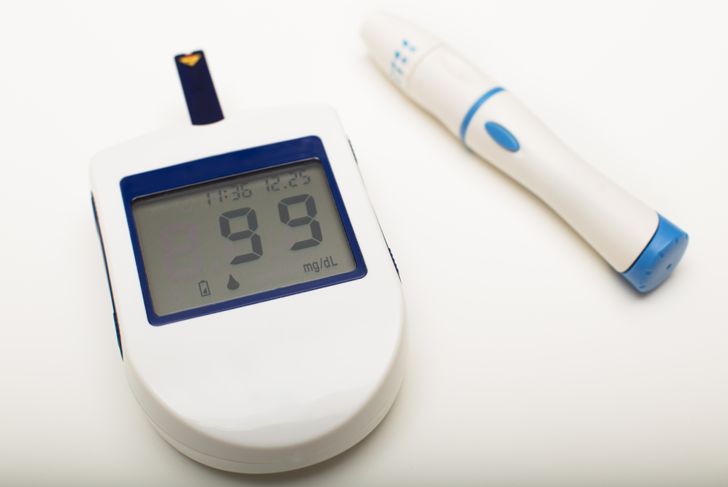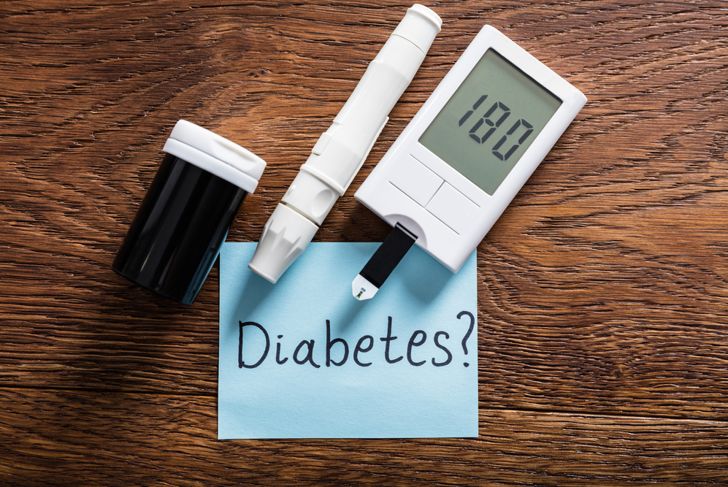A blood sugar level is the measurement of the amount of sugar that is present in your blood. The levels change throughout the day based on food, exercise, and even time of day. Sugars are measured in millimeters per deciliter of blood. Normal levels are present in a healthy person while a low or high level marks a medical condition. The most common condition associated with blood sugar levels is diabetes. It is important to maintain a healthy level of sugars to prevent serious health consequences.
How It Works
Digested sugars enter the bloodstream usually within 15 to 30 minutes following consumption. Substances like soda and juice are going to hit fairly quickly considering they are liquids. Sugars are broken down in the body and turned into glucose, our bodies source of energy. Glucose can’t enter cells, however, without the presence of an essential hormone that gets released by the pancreas and allows the glucose to enter and energize cells. Excess glucose gets stored and saved for periods of no food so the body can self-maintain a healthy blood sugar level.
Healthy Levels
A healthy blood sugar level is known as a normal level. There are two points a level is typically tested: fasting and after meals. Fasting blood sugar levels are measured after an eight hour period of no food or drink. In a healthy adult, these levels should range between 70 and 99 mg/dl. Two hours after eating, a normal result should fall below 140 mg/dl. A healthy diet and exercise are two key practices to help maintain normal blood sugar levels.
High Levels
Glucose levels tests are a part of routine labs done at a physical exam. They are also checked frequently in pregnant women to ensure they are within normal limits. A high glucose number, hyperglycemia, can be an indication of the medical condition Diabetes. Diabetes can be brought on by a poor diet containing too much sugar, or if there is not enough hormone production in the body. If the number is between 100 and 125 mg/dl, the patient is considered to have prediabetes. Levels can easily move to normal with lifestyle changes like weight loss and diet changes. If not, diabetes is likely to develop with a blood sugar of 126 mg/dl or higher. Too much glucose in the blood can have negative impacts on the body and needs to be regulated as soon as possible.
Low Levels
Low blood sugar levels can also cause health problems. Hypoglycemia is a condition that usually occurs in people who have developed diabetes. It happens when levels drop below 70 mg/dl. This can be due to several factors including diet, medications, exercise, or other medical conditions. Low blood sugar levels can cause a person to pass out with little warning. It can change by consuming a fast-acting carbohydrate like juice or milk.
Overnight
Glucose levels tend to rise overnight, especially in the morning hours. This is referred to as the Dawn Phenomenon. In both types of diabetes, this happens when not enough hormone is produced. Hormone levels also rise in the morning hours which can disrupt the correct amounts. Adjusting the time of injections, other medications, and meals can help to correct high morning levels. Some physicians recommend eating a healthy late night snack to help control the overnight increase.
Testing Levels
It is important that people with blood sugar conditions test their sugar levels on a regular basis to help monitor for proper treatment. Blood sugar monitors are used with testing strips. A small needle pierces the skin and gives an instant blood sugar reading. For conditions that are well controlled, testing may not have to be often. If it is a new diagnosis or poorly controlled, testing may be necessary after every meal. It can be frustrating, but luckily most monitors are virtually pain-free and quick.
Symptoms of Blood Sugar Issues
There are symptoms associated with high and low blood sugars. The symptoms of hyperglycemia include an increase in thirst, frequent urination, headaches, and fatigue. Blurred vision and trouble concentrating can also occur. The same symptoms arise when blood sugar levels are low. The main concern with low blood sugar is that it often leads to dizziness and passing out. It can lead to serious episodes of seizures and even coma if left untreated too many times.
Treatments
Type 1 and Type 2 Diabetes can be well controlled with diet and exercise, but may often require the use of medications as well. Injections are often used to control the amount of blood sugar and help those who don’t produce enough of it naturally. There are other medications used to control blood sugar like Metformin. Statins are medications that limit the amount of bad cholesterol produced by the liver that can also contribute to diabetes issues.
Effects on the Body
Having uncontrolled blood sugars for long periods of time can have devastating effects on the body. Blood sugar levels affect vital organs, eyes, and even teeth and gums. Heart attacks, strokes, and heart disease are all increased with uncontrolled levels. Kidney disease and kidney failure are also at a higher risk. Nerve damage, dental problems, and vision problems are also common. It can also cause infections in feet that are unable to heal and lead to amputation. These medical conditions are why it is so important to maintain proper health and control of sugar levels.
Lifestyle Changes
It is important that anyone who has been diagnosed with prediabetes or diabetes work with a physician to control blood sugars. Better control will minimize the negative effects on the body. Diet changes like eliminating sugary sodas and juices are very important. Desserts, fruits, and even cereals can cause spikes in sugars. Exercise is a great way to naturally lower your blood sugar and should be done for at least 30 minutes a day. Reducing stress, quitting smoking, and refraining from alcohol are also ways to reduce sugars and improve overall health.

 Home
Home Health
Health Diet & Nutrition
Diet & Nutrition Living Well
Living Well More
More




















